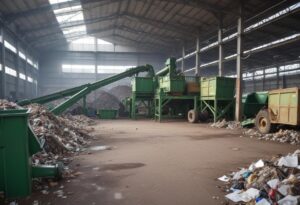Water is an essential resource that is critical for human survival and the sustainability of the planet. However, water scarcity is becoming a growing concern in many parts of the world due to a variety of factors such as climate change, population growth, and urbanization. This has made the need for water conservation and the implementation of water recycling measures more important than ever before.
Water conservation involves using water efficiently and reducing wastage. There are various methods currently used for recycling water, including greywater recycling, rainwater harvesting, and wastewater recycling. Greywater recycling involves treating wastewater from sources such as sinks, showers, and washing machines, and reusing it for non-potable purposes such as irrigation and toilet flushing. Rainwater harvesting involves collecting rainwater and storing it for later use. Wastewater recycling involves treating and disinfecting wastewater to a level where it can be safely used for a variety of purposes, including drinking, irrigation, and industrial processes.
While these methods of water recycling have their advantages, they are not without their drawbacks. Greywater recycling may not be suitable for all households, as it requires the installation of additional plumbing and treatment equipment. Rainwater harvesting is also dependent on rainfall patterns and may not be a reliable source of water in areas with low rainfall. Wastewater recycling requires significant infrastructure and energy resources for treatment and can be costly.
Another alternative for supplementing fresh water supply is desalination, which involves the removal of salt and other minerals from seawater to make it suitable for drinking, irrigation, and other purposes. Desalination has been implemented in several countries, including Saudi Arabia, Israel, and Australia, as a means of providing a reliable source of water. While it has its advantages, such as providing a source of water that is not dependent on rainfall, desalination also has its drawbacks. It is a highly energy-intensive process and can have negative environmental impacts, such as the discharge of concentrated brine back into the ocean, which can harm marine life.
In conclusion, the need for water conservation and the implementation of water recycling measures is becoming increasingly important as the demand for water continues to grow. While there are various methods of water recycling that can be used, they all have their advantages and disadvantages. Desalination is another alternative for supplementing fresh water supply, but it is not without its drawbacks. Therefore, a combination of water conservation, water recycling, and desalination may be necessary to ensure that we have a reliable source of water for future generations.



